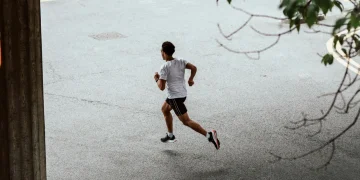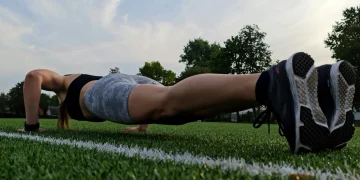If you decide to start running at 50 or more, you are already on the right track. In fact, it is better to come to the sport late than not to come to it at all. The scientific facts and motivating statistics in our article will prove it to you. And useful tips will show you how to switch to a running routine at your age wisely.
Is 50 too Old to Start Running?
If you still doubt that starting to run at 50 is a good idea, then here are some motivating facts:
- Between 1980 and 2009, the percentage of adult runners participating in the New York City Marathon increased significantly. In particular, this applies to men over 65 and women over 45. At the same time, the number of finishers under 40 years of age has decreased.
- Other statistics also tell us that the same New York City Marathon over the past 25 years has accepted 4000% more runners over 65 years old. At the same time, performance among the age group also increased. The main factors that motivate people running after 50 and older are sports competition and the desire for healthy aging.
- Margaret Webb, author of Older, Faster, Stronger started out running at 50 plus as an overweight smoker. Now she is an elite marathon runner with many sporting achievements.
- Olga Kotelko is a phenomenal athlete who has an entire book dedicated to What Makes Olga Run?: The Mystery of the 90-Something Track Star and What She Can Teach Us About Living Longer, Happier Lives. She holds more than 23 world records in athletics, 17 of which are in the category from 90 to 95! She continued to compete until she died at the age of 94. Isn’t that an inspiring example for 50 year olds?
Health Benefits of Running at 50+
If you are beginning running at age 50 not for Olympic records and not for running marathons it still makes sense, above all for your health.
The Journal of the American College of Cardiology claims that the risk of death from cardiovascular disease is reduced by as much as 45% due to running. This is because running improves “good” cholesterol levels and blood pressure.
The National Center for Chronic Disease Prevention and Health Promotion says that aerobic activities, including running, are an excellent prevention of lifestyle-related diseases such as diabetes, certain types of cancer, dementia, depression, and anxiety. At the same time, it is emphasized that such sports activity is beneficial regardless of age!
A study in the Frontiers in Physiology divided older participants into three categories: those who started running in their teens, those who started running after 50, and those who never made it to an active lifestyle.
Both active groups (early starters and late starters, as they are called in the study) had 12% more muscle mass and 17% less fat mass than inactive group. Meanwhile, the body composition of late starters did not differ much from early starters, although the latter had about 30 years more training experience!
Just as interestingly, the finish time in the active age group also did not differ significantly whether the subjects had been running for 30 years or less than 10 years.
All this proves that a running beginner is never too old. At whatever age you start running, your body will receive a number of benefits and may even thank you with sports results.
Beginning Jogging for Seniors: Important Tips
The global scientific review “Physical activity is medicine for older adults” tells us that increased levels of physical activity are directly related to longevity and improved health. In this regard, the review contains specific recommendations on how to introduce aerobic (that is, running) and other exercises into your life competently. Based on it, we have created the tips below.
Consult a Doctor
Unfortunately, in addition to the benefits, running at 50 comes with certain risks, such as runner’s knee, shin splints, stress fractures, and achilles tendon tear.
Consulting with your doctor will help you determine how high these risks are for you, based on your current health status. After evaluating it, they will tell you if it is safe for you to start a running training program and how intense it can be.
Remember Your Limits
Undoubtedly, your experience of aging is individual and depends on many factors such as diet, lifestyle, genetics, and so on. However, there are some general changes that may occur with age, such as:
- loss of muscle mass
- decline in balance ability
- decreased cardiovascular endurance
- reduction in muscle strength and endurance.
So be patient with yourself and don’t try to complete the beginner running plan for 20 and 30 year olds. The World Health Organization and American College of Sports Medicine (ACSM) in the above review recommends 150-300 min of moderate-intensity or 75-150 of vigorous-intensity aerobic activity per week.
According to ACSM, the intensity scale is divided from 0 to 10, where moderate-intensity is 5-6 (minor changes in breathing and heart rates) and vital-intensity is 7-8 (quite noticeable changes in these indicators).
Combine Running with Walking
WHO and ACSM say that aerobic activity should be done by seniors in sets of at least 10 minutes. At the same time, they emphasize that aerobic activity is not only running but also walking.
Walking is less traumatic than running, which is important given the age-related changes in muscles and tissues. Regular brisk walks can be more productive than one hard, long run, which can harm an unprepared body and lead to postponing subsequent workouts.
Running for beginners of age can start with a 20-30 second run and then walk until the breath is caught. Over time, you can increase your running time and decrease your walking time accordingly. The main thing is to give yourself this time to get used to the loads and stay motivated.
Rest Regularly
Considering the weekly rates above, it can be assumed that you can run 5 times a week for 15 to 60 minutes a day (depending on intensity). However, this is not a universal answer to the question “how often should you run in your 50s”?
The authors of one study say that normal wear and tear in older runners requires more recovery time after training. Also, senior runners experience overtraining syndrome more often.
This means that you need to listen to your own body (in addition to medical advice) to determine the frequency of training. In particular, watch for signs of overtraining syndrome such as increased frequency of injury and headaches, loss of enthusiasm, lack of energy, persistent muscle soreness, and decreased performance.
If you notice these signs after your next workout, give yourself more time to recover. After all, injuries and lack of enthusiasm will definitely not help you turn running into a routine and achieve your goals.
Do Strength Training
Authoritative organizations from the review say that strength exercise routines over 50 should be performed at least twice a week and include 8-12 repetitions, preferably under the supervision of a specialist.
So if it’s time to take a break from running, dedicate that time to strength training. They strengthen muscles, tendons, and bones, reduce the risk of knee injuries, and prevent Achilles tendon damage. Thus, they help to cope with all the main risks of adult runners that we mentioned.
Practice Yoga
A separate paragraph of the review is devoted to balance exercises. So people with mobility problems should do them 3 or more times a week to prevent falls.
But even if you don’t have mobility issues, balance exercises can still benefit you if you start running at 50.
For example, yoga lowers blood pressure and thus reduces the risk of heart attack, heart failure, and stroke. In addition, it improves mobility of ligaments and joints as well as body flexibility in general.
So by adding yoga or other balance exercises to your routine, you boost your health and prepare your body for running.
Running is an activity that welcomes all age groups. If your doctor has given you the green light – discover and enjoy it!






